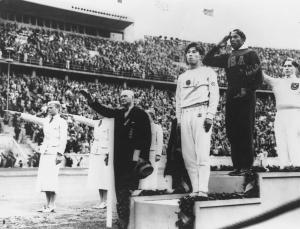(WARNING) The following two movie articles contain spoilers.
Christopher Nolan cannot be left out when talking about movies concerning “time”. We chose two movies that used “inverse time configuration” in his filmography: Memento (2000) and Tenet (2020). The director’s interest in time seems to have started in 2000 with Memento and reached its heyday with Tenet in 2020.
Memento
- Main Plot of the Movie
Leonard Shelby, the main character, is a man who lives to avenge the death of his wife. He was attacked on the same day, and since then he has been suffering from short term memory loss. He remembers everything vividly before the incident, but newly created memories do not last more than 10 minutes. Easily put, if a conversation lasts more than 10 minutes, he would not remember with whom he is talking to, and on what subject they had been talking about.
The only thing Leonard can trust are notes and snapshots of the people, places, and things he keeps for himself. He writes down new notes beneath a photo only when he is sure of the memory. He also tattoos himself when there is something that he wants to remember to his grave; for example the name of the suspect, John G. But the authenticity of these records remain a question for the viewers as well. (This question of what to believe as a fact remained throughout the running time of the whole movie.)
Leonards talks over the telephone about himself before the incident: he was an insurance investigator. He talks about the case of a man named Sammy Jankis who had short term memory loss. His wife made a claim for insurance money but was rejected because the company thought that Sammy was just acting. His wife, in order to find out what was true, asks her husband to inject her with insulin every 10 minutes believing that if her husband was only faking his memory loss, he would not consistantly do as she requested. However, his illness was not fake and she died from overdosing on insulin. Leonard has a tattoo on his hand that says “ Remember Sammy Jankis”. The relationship between this story of Sammy and the tattoo is not revealed until the end of the movie.
Leonard also has two friends, Teddy and Natalie. Teddy tells Leonard to never trust Natalie, while Natalie tells him never to trust Teddy. The process how Leonard, with his short term memory loss, finds his way with these two conflicting pieces of advice is a considerable point of interest in the movie.
- How the Movie is Edited
I read a review that said that if Inception is a movie that touches the Y axis of time to show depth, Memento touches the X axis of time, showing that a movie does not always unfold in chronological order. The basic plot of Memento is quite similar to other thriller movies when put in chronological order. The movie’s budget was approximately nine million dollars and it took less than a month to film it all. However, the way the film was edited is unique enough to lead the film to be considered a masterpiece. Memento consists of a total of 22 black and white scenes and 22 color scenes, together a total of 44 scenes. These scenes are not shown in chronological order; they are arranged in a curve shaped like a horse shoe, then are played from left to right, alternating from top to bottom; the scenes unfold 44>1>43>2>42>3>…...>23>21>22. So it is more complicated than a typical reverse time order configuration. In other words, less than five minutes after the movie begins, scenes of the beginning and end of the plot are shown. and the rest of the story is presented little by little like puzzle pieces.
(You can check the curve on the paper article or pdf)
In the curve, the black and white scenes show the past and flow in chronological order, while the color scenes are shown in reverse chronological order and represent present day. Leonard's narrative of revenge is shown in color, and the story of his past meeting with Sammy as an insurance investigator is presented in black and white. Therefore, in the case of the scenes in color, you get to watch something happen without knowing any details of the accident, and can understand only when the next scene is shown. The effect of this editing is not just to enhance the film's cinematic quality but it also let viewers get immersed in Leonard’s symptoms of short term memory loss. Throughout the movie, it was very frustrating and difficult to understand the story. But I tried to understand as much as possible by connecting the fragmented scenes I remembered, so I could actually feel something similar to that of Leonard.
In addition to the editing, the difference in camera techniques can be noted. In the color scene, the camera focuses on the main character's point of view and narrates the main character's thoughts, while the black and white scenes are filmed one step away from the main character. This boundary eventually becomes blurred, and in the last scene, the 22nd scene, as the screen is switched from black and white to color, the truth is revealed. The viewers, when immersed in the movie, will remember the thrill of this last scene.
Because of this unique way of editing, the movie received conflicting reviews: some said it was boring and difficult to follow, while there were others who praised it. It seems that first ninety minutes only exists to build up the last ten minutes of the movie, and this may be the reason some people regard this movie as quite boring. However, this movie can be differentiated from the traditional way many thriller movies are told: in them, the events occur with the characters not knowing the background story but the viewers knowing them. But in Memento, since the movie is composed of edited scenes, the viewers are not given any clue of what is happening on the screen. Therefore, the viewers should actively understand the composition of the event rather than watching with grief or exhilaration arousing from the fact that the character in the movie does not know what they know. Especially in Memento, the editing allowed the viewers to be absorbed in Leonard’s symptoms, making the movie more immersive than those where the director implies a lot of understanding by the viewer. As the sequence of switches from black and white to color scenes increased, viewers’ immersion into Leonard slowly fades and then they can truly face Leonard. So, it can be said that this editing style was perfect to convey the story.
- The Message the Movie Conveys
The most shocking fact in the movie is that Sammy's story is actually Leonard's own, meaning that Leonard is manipulating his memory by creating a fictional character. All the facts Leonard has tattooed on his body are manipulated to his advantage and he is looking for John G, who does not exist. He eventually ends up killing the wrong person. I could no longer feel pity for Leonard, who only believes what he wants to believe, making up memories in his favor. That is quite scary to pity a person like that.
In the beginning, Leonard speaks very firmly. "I only believe what I see" But he believes exactly what he wants to see. And the same goes for us watching movies. There are endless questions about what the truth is, who is telling the truth among the characters. What the viewers want to believe becomes the truth and they watch the movie with that belief to the end, until everything is revealed. This movie casts a heavy question about the truth of what we see.
Han Seunghyeon seunghan7019@naver.com
<저작권자 © 홍익대영자신문사, 무단 전재 및 재배포 금지>





